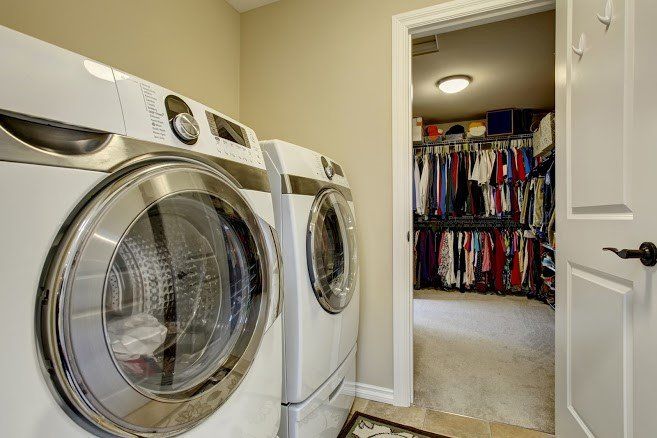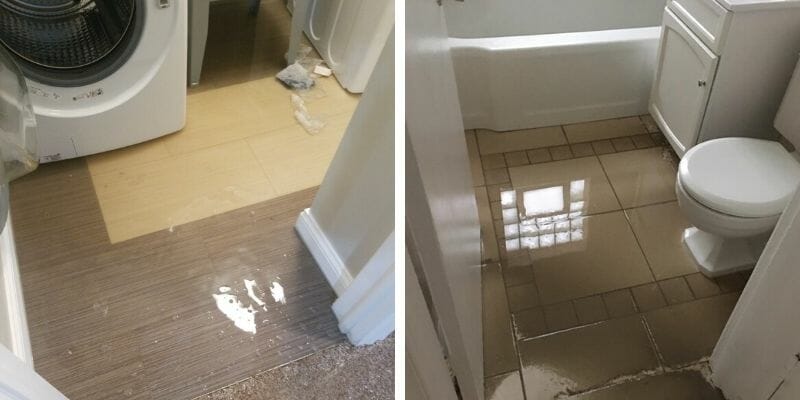Surviving Washer Malfunctions: Practical Tips For Urgent Water Damage Handling
Surviving Washer Malfunctions: Practical Tips For Urgent Water Damage Handling
Blog Article
Just how do you feel in regards to Washing Machine Overflow ?

How you hand those priceless minutes after your cleaning device leakages as well as floodings can impact just how fast your home gets restored. Knowing what you must do as well as that to call can save you from substantial damages. It will certainly also help aid you in filing for home owners insurance coverage. Take a look at these top suggestions below:.
Washing Maker Overflows And Floodings.
Turn Off the Power.
Turn of the breaker where the cleaning maker is. It is essential to ensure the washing machine is off. Water is a conductor, and doing this step guarantees no one experiences electrocution. Besides, you need to not utilize your washer up until a specialist technician has actually checked it.
Turn Off Water Supply.
You must turn off the water supply of the device. Whether it overruns for unknown factors, breaks down in the reduced pipelines, or ruptures the main hose pipe, you will be dealing with significant amounts of water. If the regional supply line to the washing machine doesn't shut it off, you have to switch off the major water valve outside your residence.
Call the Pros.
If you presume the issue is with your water line, you require to call a certified plumber. Nevertheless, if you are unsure, call a washing machine service technician for a fast assessment. He or she can tell you best what the issue is. Maybe an issue with the device itself or the pipelines attaching to the maker.
File the Damages.
Before cleaning up this emergency flooding situation, you should document everything. Keep in mind, pictures, and videos. It would be best if you had all of this as evidence to support your insurance policy claims. Then you can call your home owner's insurance policy copyright to check what other demands they require to refine your demand.
Take Out the Standing Water.
As you wait for the plumber or repair technician to come, you should take care of the flooding. If your washer is in the basement with substantial flooding, you require a submersible pump to get the water. You can lease or borrow this. However, if it occurs in the middle of the evening, the old container approach will certainly also work. Usage a number of jugs to manually dump out the water. It would be best if you did this right now, as the longer the water stays, the a lot more considerable the damage.
Dry the Location as Much as Feasible.
After getting the standing water, get sponges or old towels to suck out as much water from the flooring or carpeting. Maintain the windows open to distribute the air. You may also make use of electric followers to accelerate the drying out process. Remember, water will cause mold and mold and mildew growth which is hazardous to your health. If you really feel that the scenario is too much to take care of, you can likewise look for water elimination solutions from a restoration company. Your insurance coverage claim might likewise help spend for this solution, so just ask.
Keep in mind, a damaged washer with leaking pipelines will result in tragic damages because of the large quantities of water it can unload. Thus, it would certainly aid to have your equipment as well as water lines checked every year. You can seek help from a respectable plumber to change your supply line hoses. Doing examinations stops demanding breakdowns and also costly breakdowns.
MY WASHING MACHINE FLOODED THE HOUSE! WHAT SHOULD I DO?
STOP THE WATER
First things first, turn off the water. You ll want to stop the flooding at its source, which is the washing machine s water supply. Once you ensure the water is turned off, unplug your washing machine.
If there is standing water around the electrical plug, you may want to take an extra precautionary step and turn off the power before unplugging your washer to prevent electrical shock.
CLEAN UP WHAT YOU CAN
Next, you ll want to clean up as much water as you can. Depending on how much your washer flooded this may take a lot of towels, but it is very important in ensuring you don t have lasting washing machine water damage. For a large amount of water, using a wet vacuum and large fans for drying will be most effective.
EMPTY THE MACHINE
Once you ve cleaned up the majority of the water from the overflow, you ll want to remove any items from your washer, along with any leftover water that is still in your machine. This will give a you or a repairman the ability to analyze your machine and determine the cause of the washing machine overflow.
CALL IN THE EXPERTS
Depending on how washing machine-savvy you are, you may be able to determine the cause of the overflow yourself maybe you notice a faulty hose, like we discussed earlier. But if you aren t able to determine why your washing machine flooded, you ll want to get someone in there who can.
FIX ANY WATER DAMAGE
Effects of water damage after a washing machine flood may include damage to surrounding areas, such as your floors, walls, or other close-by machines. And while visual damages might be the most noticeable, you ll want to pay attention to smell as well. A wet-dog type of smell is normal at first and can usually be remedied by opening nearby windows to air-out the area.
However, if the smell lingers for more than three days, that s an indication there is still water somewhere. Even after thoroughly drying the impacted area, water may be hiding in your floors or in the sheetrock in your walls, which can indicate mold. Call in a mold remediation professional to inspect your property for hidden moisture.
WHAT CAUSES WASHING MACHINES TO FLOOD?
Too much laundry soap. When it comes to how much soap you use, be sure to not exceed the recommended amount. Using too much soap can cause build up and clog your washing machine leading to overflow. Too many clothes. If you overload your washer with too many clothes, you may notice your washing machine becoming unbalanced and making awful noises, like a spaceship getting ready to take off. This is an indication that your washer is out of alignment which can lead to a flood. Too weak or old of a hose or other faulty washing machine parts. Washing machines rely on hoses to transport water to and from the washing machine. If one of the hoses becomes weak, faulty, or develops a crack, say hello to a flood. You ll want to ensure your hoses are in good shape and properly connected so no water can leak out. It s also important to check the washing machine draining mechanisms, as well as the door latches and seals. Making sure everything is in tip-top shape and proper working order will help keep your washer from flooding. https://www.servicemasterbyzaba.com/blog/washing-machine-flooded/

As an enthusiastic reader about Washing Machine Overflow , I imagined sharing that excerpt was important. Those who appreciated our blog entry plz remember to pass it around. Thank you so much for taking the time to read it.
Get Your Estimate Now
Report this page